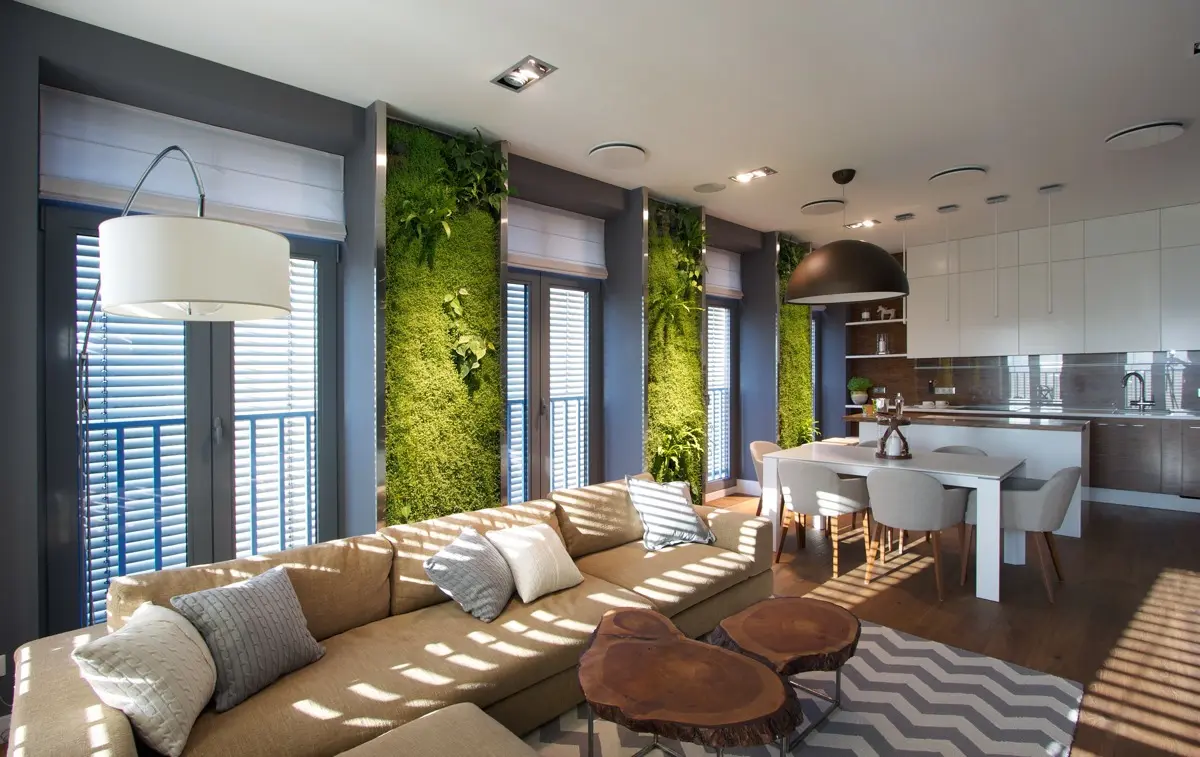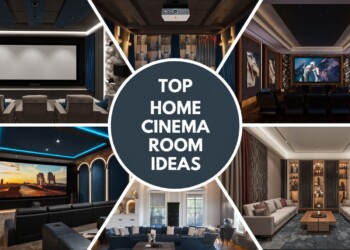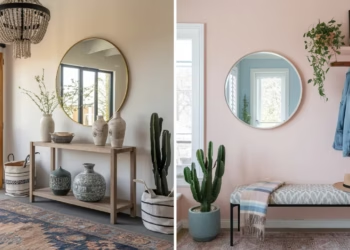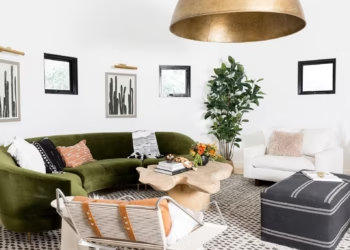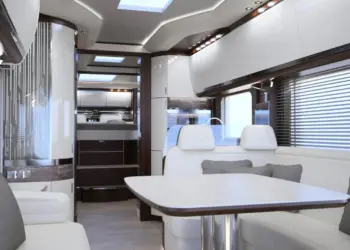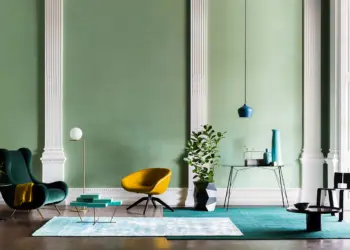In the realm of interior design, achieving a perfect blend of functionality and aesthetics is an art form. We delve into the intricacies of creating spaces that not only captivate but also stand the test of time. Let’s unravel the secrets to timeless elegance and explore innovative ideas that transcend the ordinary.
Table of Contents
1. Enhancing Airflow and Aesthetics with Woven Cane
In crafting a mudroom idea that epitomizes both practicality and beauty, we draw inspiration from the masterful design by Ashley Montgomery. The use of caned cabinet fronts not only adds a touch of sophistication but also serves a dual purpose by facilitating airflow to cabinets storing farm essentials. This ingenious solution transforms high-traffic areas into havens of order, proving that thoughtful details like caning can be a game-changer.

2. Harmonizing Strong Colors and Prints for Serene Bedrooms
Contrary to conventional wisdom, Leah Ring of Another Human showcases the art of harmonizing rich colors and prints in bedroom design style. A palette that might seem unconventional at first glance seamlessly comes together through patchwork textiles, ceramics, and multidimensional artwork. The result is a bedroom bathed in natural light, exuding a layered comfort that induces serenity without overwhelming the senses.

3. Infusing Charm with Creative Cabinet Skirts
Meta Coleman’s California kitchen rejuvenation offers a lesson in charm and creativity. Inspired by tile and color, Coleman transforms a walk-in pantry into a bright sanctuary. The inclusion of adorable cabinet skirts not only adds a whimsical touch but also softens the overall ambiance, proving that even functional spaces can be infused with character.

4. Embracing the Timelessness of Blue
Kingston Lafferty’s design philosophy unfolds a captivating lesson – there are no downsides to any shade of blue. From the artwork above the fireplace to the light green ceiling and patterned chairs, every element contributes to a harmonious symphony of color. This daring approach showcases the versatility of blue, proving its enduring appeal in creating captivating and vibrant spaces.

5. Mastering the Art of Timeless Tiles
Avery Cox, the aficionado of classic subway tiles, takes us into the realm of timeless tile designs. Mosaics and penny tiles, especially hand-painted or marbled ones, emerge as stars in bathrooms, kitchens, and bedrooms. Unveiling a moment where customization meets tradition, Cox’s design philosophy affirms that tiles are not just functional but also an artistic expression.

6. Customizing Tiles for Unique Bathrooms
Jessica Geller of Toledo Geller introduces a budget-friendly yet impactful method of achieving a custom tile design in bathrooms. By cutting readily available materials into smaller sizes, Geller demonstrates how creativity can thrive within constraints. This ingenious approach turns standard tiles into bespoke pieces, elevating the bathroom from a functional space to an artistic masterpiece.

7. Transformative Power of Wallpaper: Beyond Aesthetics
Janie Molster takes a bold step in redefining spaces by covering appliances with peel-and-stick wallpaper in the kitchen. A testament to the transformative power of design, this approach breathes new life into the room, showcasing that even the most mundane elements can become a canvas for creativity.

8. Playful Elegance in Color and Pattern Combination
Designer Anthony Gianacakos imparts a valuable lesson in creating a space that balances playfulness and sophistication. His own bedroom becomes a canvas where colors and patterns push the envelope, demonstrating that a judicious mix can result in a stylish and authentic ambiance. Gianacakos proves that breaking the mold can lead to spaces that are both daring and timeless.

9. Mirrors: A Windowless Room’s Best Friend
Allie Provost introduces a simple yet effective solution for rooms lacking windows – mirrors. The strategic use of mirrors not only amplifies natural light but also creates the illusion of space, transforming a windowless room into a bright and inviting haven.

10. Softening Stainless Steel with a Subtle Matte Finish
Suzanne Stefan showcases the allure of a stainless steel matte finish in her kitchen. The soft, subtle, and welcoming nature of this finish interacts harmoniously with light. Stefan’s kitchen design advocates for a departure from the conventional, proving that even utilitarian elements like stainless steel can contribute to a warm and inviting atmosphere.
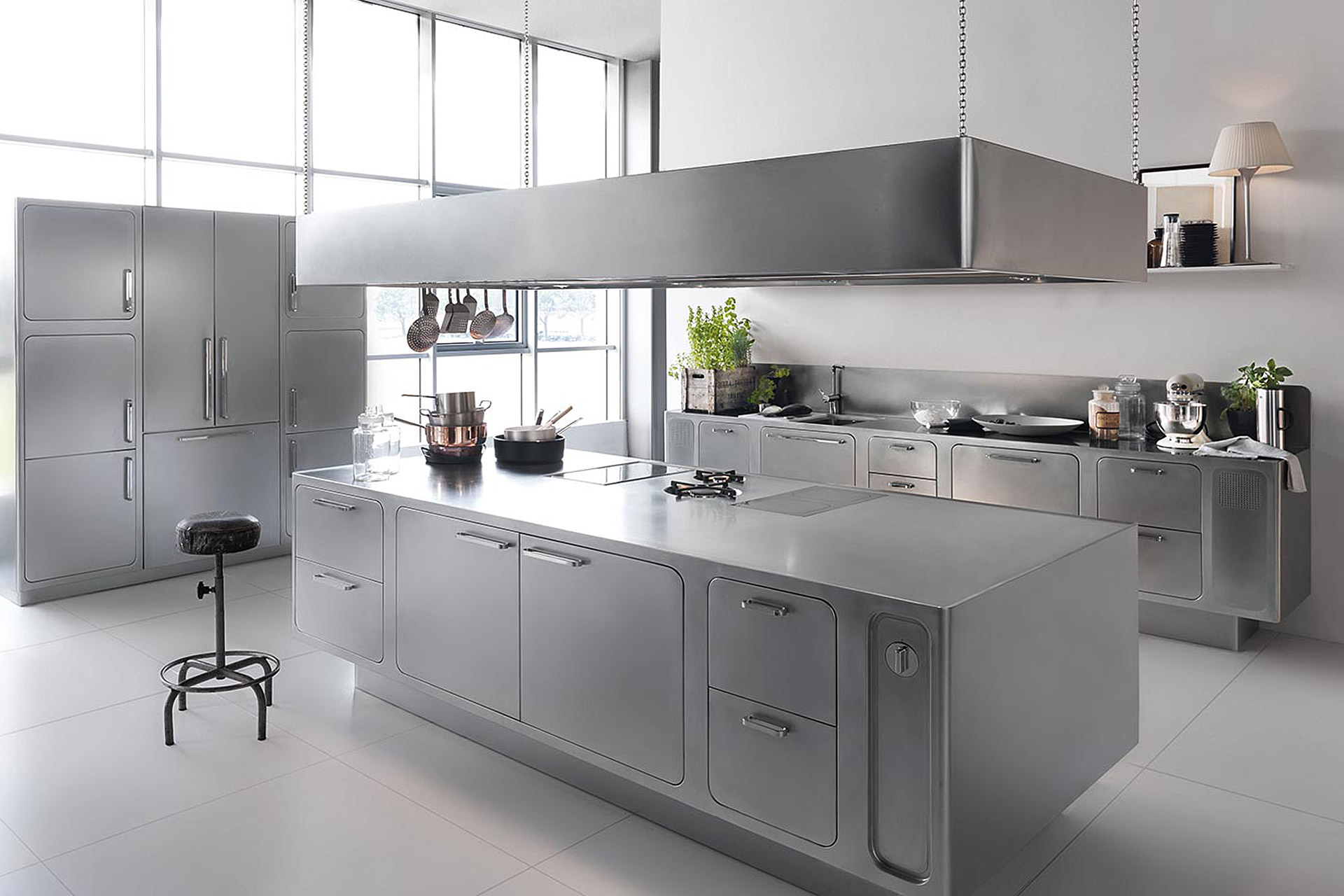
11. Personalizing Spaces with Cherished Collections
Marie Flanigan crafts a tea room that transcends mere functionality. Inspired by a collection of china, she showcases the potential of personal collections as a starting point for room design. This approach emphasizes that cherished items can serve as the foundation for creating spaces that are not just aesthetically pleasing but also deeply personal.

12. Concealing Radiators: Functional Beauty
Leanne Ford Interiors ingeniously integrates a radiator into the design by building a cabinet over it. This not only reclaims hallway space design but also transforms it into a delightful reading nook. Ford’s approach highlights the transformative power of design in turning potential eyesores into functional and beautiful elements of a room.
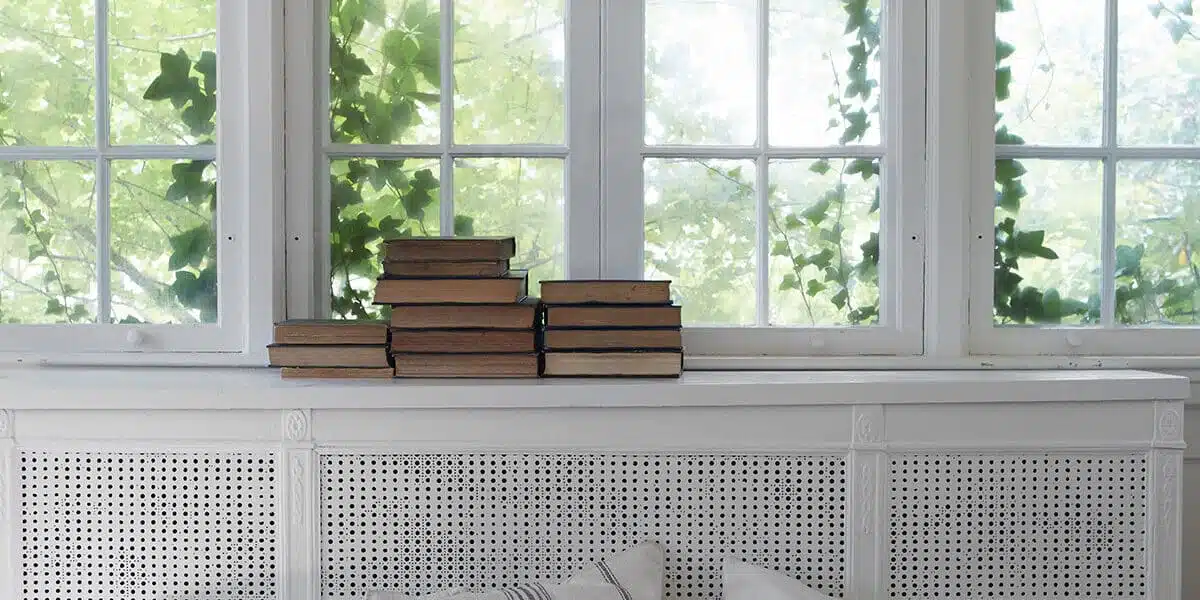
13. Crafting Personal Retreats: A Sanctuary in Your Home
Melissa Rufty introduces the concept of creating a personal oasis within your living space. By carefully curating elements that evoke tranquility and comfort, McCaffety demonstrates that a home can be transformed into a sanctuary, offering a retreat from the hustle and bustle of daily life.

14. Lacquer Wallpaper: A Stylish and Practical Choice
Corey Damen Jenkins advocates for the use of lacquer wallpaper, not just for its stylish appeal but also for its practicality, especially in homes with children. The ability to repair it easily makes it a child-friendly alternative to traditional lacquer. Straube’s insight encourages a reevaluation of materials, proving that style and practicality can coexist seamlessly.

15. Artistic Personalization: Sketches of Abstract Elegance
Interior designer Eneia White introduces a cost-effective way to adorn walls with personal touches. By placing your own sketches of abstract art into matted frames, White suggests that you can achieve an expensive look while infusing your space with a unique and personal touch that guests will admire.

16. Multifunctional Outdoor Furniture: Style and Utility
David Quarles IV highlights the versatility of small, outdoor ceramic stools as multifunctional pieces of furniture. Beyond serving as extra seating, these stools can double as additional surfaces, offering a practical solution for both work and leisure in outdoor settings. Quarles demonstrates the importance of merging style and utility seamlessly in furniture design.

17.Shopping Smart: Bringing Pieces of Home Together
Jean Liu emphasizes the significance of incorporating pieces from a previous home into a new design. Liu’s approach ensures a layered feel, creating a harmonious blend of familiarity and novelty in the living space. This strategy underscores the importance of not discarding cherished items but rather incorporating them into evolving design narratives.

18. Adding Character with Painted Molding
Aldous Bertram showcases how the absence of ceiling molding and door molding in an apartment became an opportunity for creative expression. By adding them with paint, Bertram transforms a potential design limitation into a unique and character-filled space.
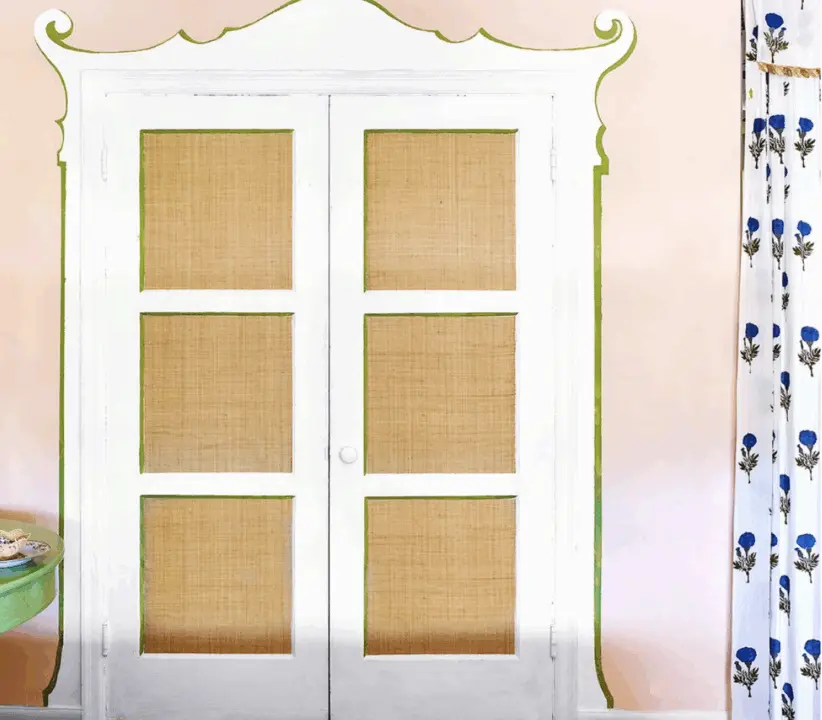
19. Faking Opulence with Painted Stair Runners
Fawn Galli introduces a bold and cost-effective strategy to enhance stair aesthetics. By painting stair runners in vibrant patterns, Galli achieves the look of opulent carpeting. This inventive solution proves that luxurious aesthetics can be achieved without the hefty price tag.
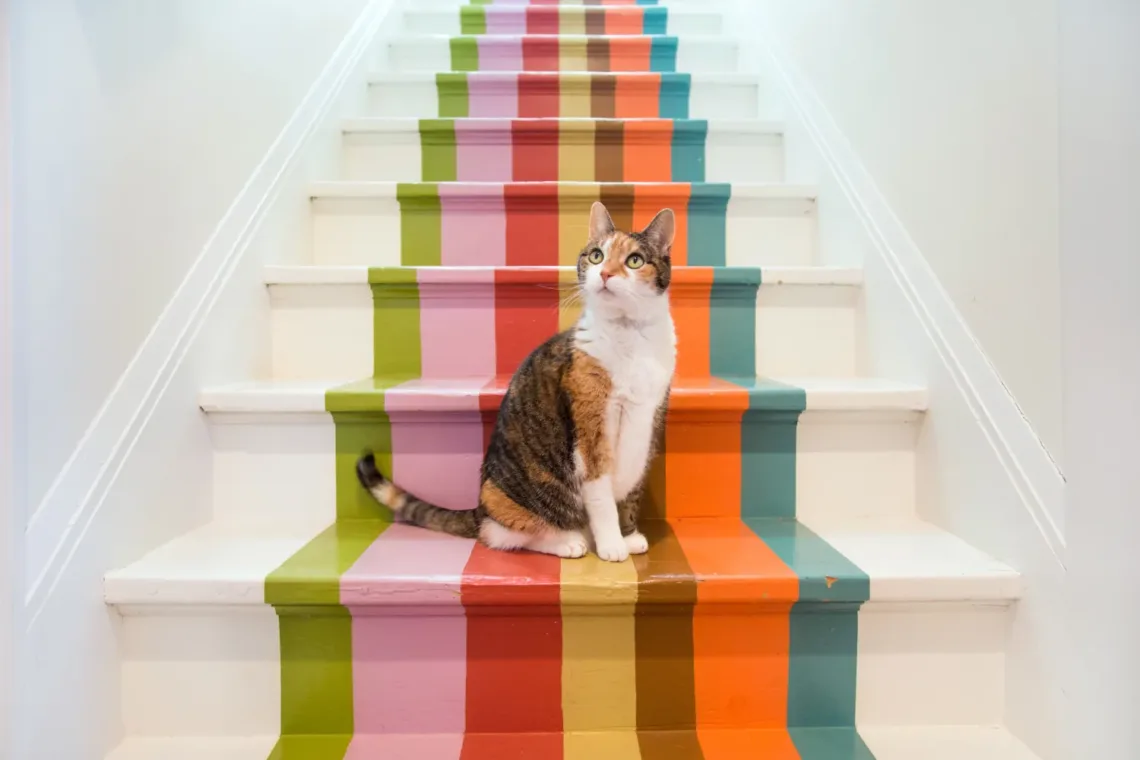
FAQs
What exactly do interior designers do?
Interior designers are professionals who plan and coordinate the design and decoration of indoor spaces. Their responsibilities include understanding the client’s needs and preferences, creating design concepts, selecting color schemes, choosing furniture and decor, managing budgets, coordinating with contractors, and overseeing the execution of the design plan.
What interior design means?
Interior design is the art and science of enhancing the interior of a space to create a more aesthetically pleasing and functional environment. It involves considering factors such as spatial layouts, color schemes, furniture selection, lighting, and decor to improve the overall look and feel of a room or building.
How many types of interior design are there?
There are various types of interior design, each catering to different styles, preferences, and purposes. Some common types include residential interior design, commercial interior design, hospitality design, healthcare design, and sustainable design. Additionally, there are various design styles such as modern, traditional, minimalist, and eclectic.
What is a typical interior design?
A “typical” interior design varies based on the specific needs and preferences of the client. There is no one-size-fits-all approach, as interior design is highly personalized. However, a typical process may involve understanding the client’s requirements, creating a design concept, selecting materials and furnishings, and overseeing the implementation of the design plan.
How important is interior design?
Interior design is crucial as it significantly influences the functionality, aesthetics, and comfort of indoor spaces. Well-designed interiors enhance the quality of life, productivity, and well-being of the occupants. In commercial settings, effective interior design can also impact customer experience and brand identity. It plays a vital role in creating environments that meet both practical and aesthetic needs.
What is modern interior design?
Modern interior design refers to a style that emerged in the early to mid-20th century, characterized by clean lines, open spaces, and a focus on simplicity and functionality. Modern design often features a neutral color palette, use of materials like glass and metal, and an emphasis on minimalism. It prioritizes uncluttered spaces, natural light, and the integration of modern technologies.
